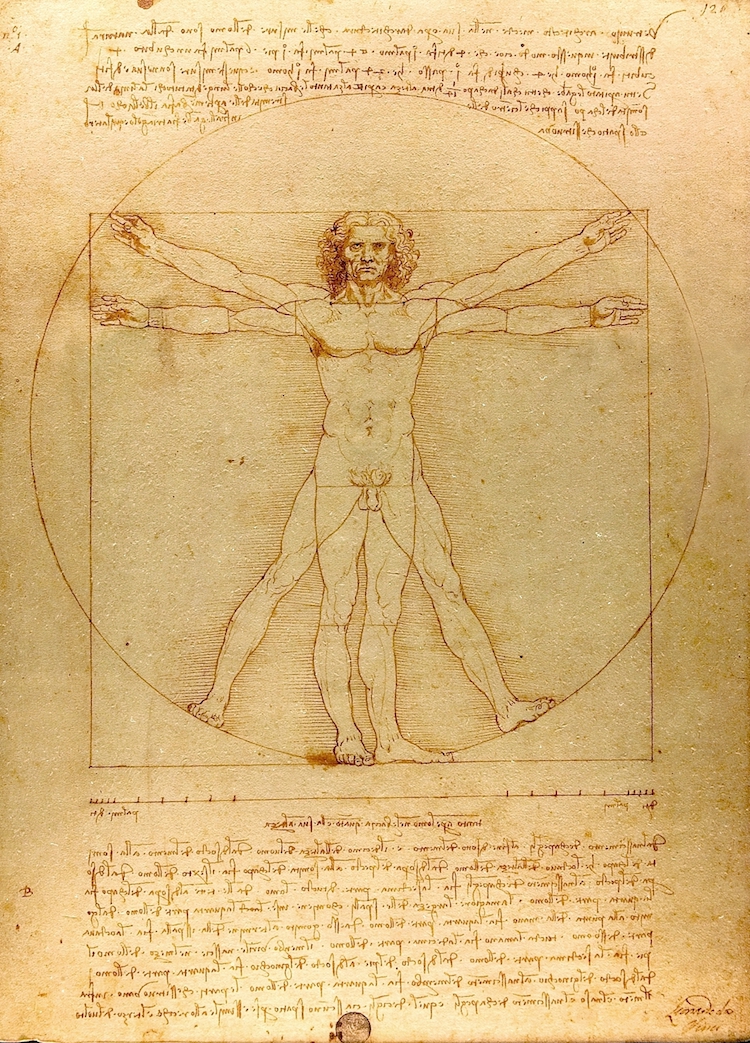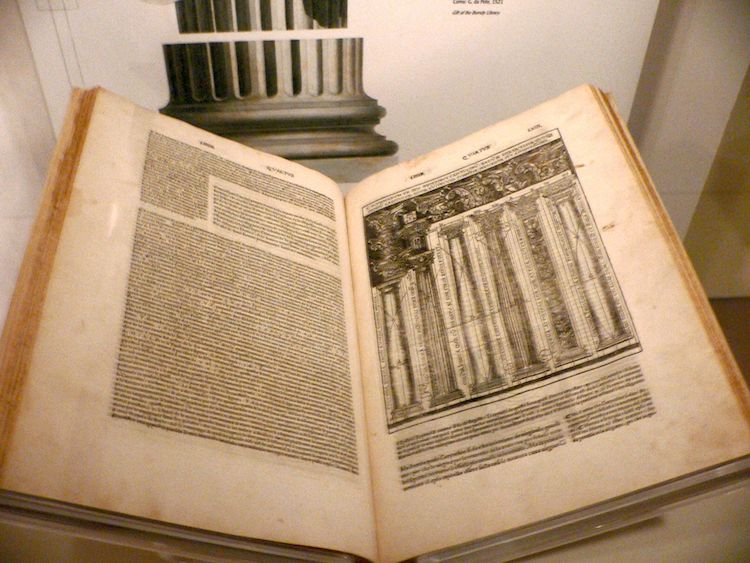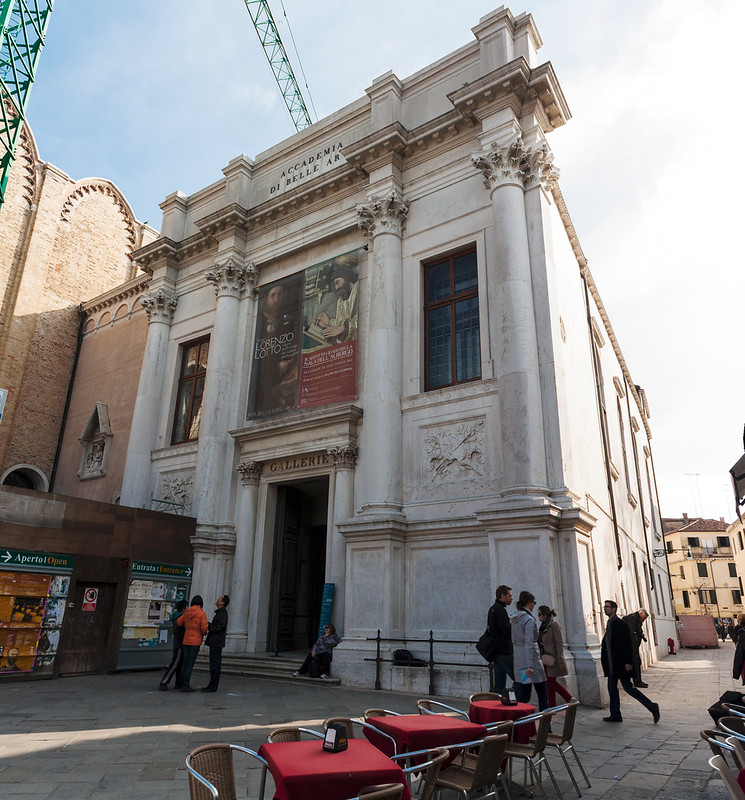
Leonardo da Vinci, “The Vitruvian Man” (ca. 1492) (Photo: Lucnix via Wikimedia Commons Public Domain)
As a master of the arts, sciences, and everything in between, Leonardo da Vinci is often referred to as a “Renaissance man.” While the polymath is perhaps most well known for his Mona Lisa masterpiece, it is his scientific sketches that impressively illustrate the encyclopedic knowledge and eclectic interests that have come to define him.
The Vitruvian Man, a late 15th-century drawing, is a prime example of such work. Intended to explore the idea of proportion, the piece is part work of art and part mathematical diagram, conveying the Old Master‘s belief that “everything connects to everything else.”
What is the Vitruvian Man?
Leonardo drew the Vitruvian Man, known also as “The proportions of the human body according to Vitruvius,” in 1492. Rendered in pen, ink, and metalpoint on paper, the piece depicts an idealized nude male standing within a square and a circle. Ingeniously, Leonardo chose to depict the man with four legs and four arms, allowing him to strike 16 poses simultaneously.

The Vitruvian Man is based on De Architectura, a building guide written by Roman architect and engineer Vitruvius between 30 and 15 BC. While it is focused on architecture, the treatise also explores the human body—namely, the geometry of “perfect” proportions—which appealed to Leonardo’s interest in anatomy and inspired his drawing.

“De Architectura” by Marcus Vitruvius Pollio (Photo: Mark Pellegrini via Wikimedia Commons CC BY-SA 2.5)
What are the “perfect” proportions?
Two blocks of backwards-written text accompany the drawing. In the first, Leonardo notes that, according to Vitruvius, these are the measurements of the ideal body:
- four fingers equal one palm
- four palms equal one foot
- six palms make one cubit
- four cubits equal a man’s height
- four cubits equal one pace
- 24 palms equal one man
Additionally, the first set of notes also specifies: “If you open your legs so much as to decrease your height 1/14 and spread and raise your arms till your middle fingers touch the level of the top of your head you must know that the center of the outspread limbs will be in the navel and the space between the legs will be an equilateral triangle. The length of a man’s outspread arms is equal to his height.”

In the second block of text, the artist describes the model body as fractions:
- “From the roots of the hair to the bottom of the chin is the tenth of a man’s height”
- “From the bottom of the chin to the top of his head is one eighth of his height”
- “From the top of the breast to the top of his head will be one sixth of a man”
- “From the top of the breast to the roots of the hair will be the seventh part of the whole man.”
- “From the nipples to the top of the head will be the fourth part of a man.”
- “The greatest width of the shoulders contains in itself the fourth part of the man.”
- “From the elbow to the tip of the hand will be the fifth part of a man”
- “From the elbow to the angle of the armpit will be the eighth part of the man.”
- “The whole hand will be the tenth part of the man”
- “The beginning of the genitals marks the middle of the man”
- “The foot is the seventh part of the man”
- “From the sole of the foot to below the knee will be the fourth part of the man”
- “From below the knee to the beginning of the genitals will be the fourth part of the man”
- “The distance from the bottom of the chin to the nose and from the roots of the hair to the eyebrows is, in each case the same, and like the ear, a third of the face”

The Vitruvian Man Today
Since 1822, the Vitruvian Man has been a part of the permanent collection of the Gallerie dell’Accademia in Venice, Italy. As it’s too fragile to be on display, the piece is rarely exhibited. However, even while concealed, the drawing remains a key part of their collection and, ultimately, one of the most important works of the Italian Renaissance.
Related Articles:
New Leonardo da Vinci Drawing Is Discovered And It’s Worth $16 Million
Top 10 Cities to Visit If You Absolutely Love Art
Virtual Tour of Florence’s Famed Uffizi Gallery Lets You Explore the Museum Online
The Significance of Botticelli’s Renaissance Masterpiece ‘The Birth of Venus’

